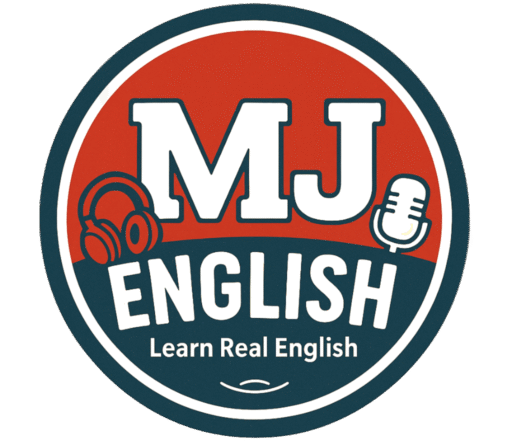在國外生活或留學時,問路是不可避免的場景。不論是要找到校園圖書館、參加 K-pop 演唱會,還是到歐洲城市旅行,懂得 asking for directions English 不僅能讓你禮貌詢問路人,還能幫助你聽懂更複雜的方向,甚至快速解讀地圖資訊。這些能力在大學生活與國際交流中非常重要,因為它們展現的不只是語言力,還有你在異地獨立生活的自信。
🎧Apple Podcast | Spotify
💬 Dialogue
一位大學生(International Student)在紐約準備去一間博物館,但不確定方向,於是向當地人詢問路線。
English Dialogue
Student: Excuse me, could you please tell me how to get to the Metropolitan Museum of Art?
Local: Of course. Walk straight ahead for about five minutes until you reach Fifth Avenue.
Student: So, I walk straight and then turn onto Fifth Avenue?
Local: Exactly. Once you’re on Fifth Avenue, head north for about three blocks.
Student: Got it. Will I see any landmarks along the way?
Local: Yes, you’ll pass by Central Park on your right. The museum is located adjacent to the park.
Student: Perfect. Is it within walking distance, or should I take the subway?
Local: It’s definitely walkable, but if you prefer, you can take the subway to 86th Street and walk west.
Student: That sounds manageable. Approximately how long would it take on foot?
Local: Around 15 minutes, depending on your pace.
Student: Thank you so much. I really appreciate your detailed directions.
Local: You’re very welcome. Enjoy your visit!
中文
學生: 不好意思,請問要怎麼去大都會藝術博物館?
路人: 當然可以。往前直走大約五分鐘,直到到達第五大道。
學生: 所以我先直走,然後轉到第五大道?
路人: 沒錯。一旦到了第五大道,往北走大約三個街區。
學生: 了解。沿途會有什麼地標嗎?
路人: 會的,你會經過右手邊的中央公園,博物館就在公園旁邊。
學生: 太好了。是走路可達的距離,還是要搭地鐵?
路人: 走路絕對沒問題,不過如果你想搭地鐵,可以坐到 86 街,再往西走。
學生: 聽起來很方便。大概走路多久?
路人: 大約十五分鐘,視你的步伐而定。
學生: 非常感謝,你的詳細指引真的很有幫助。
路人: 不客氣,祝你參觀愉快!
📚 Vocabulary Boost 重點單字
| 單字 / 片語 | 詞性 | 中文意思 | 英文例句 | 中文翻譯 |
|---|---|---|---|---|
| straight ahead | adv. phr. | 往前直走 | Walk straight ahead until you reach the library. | 直走直到到達圖書館。 |
| head north | v. phr. | 往北走 | From here, head north for three blocks. | 從這裡往北走三個街區。 |
| adjacent to | prep. phr. | 鄰近、緊靠 | The café is adjacent to the bookstore. | 咖啡館在書店旁邊。 |
| walking distance | n. | 步行可達距離 | The dorm is within walking distance of the campus. | 宿舍在校園步行可達的範圍內。 |
| manageable | adj. | 可處理的、可掌握的 | The directions are quite manageable. | 方向很容易掌握。 |
| approximately | adv. | 大約 | It takes approximately 20 minutes by bus. | 坐公車大約需要20分鐘。 |
| pace | n. | 步伐、速度 | It depends on your pace. | 這取決於你的步伐。 |
| appreciate | v. | 感謝、欣賞 | I really appreciate your advice. | 我非常感謝你的建議。 |
| detailed directions | n. phr. | 詳細的指引 | She gave me detailed directions to the station. | 她給了我到車站的詳細指引。 |
| landmark | n. | 地標 | The tower is the city’s most famous landmark. | 這座塔是這個城市最有名的地標。 |
🔍 Sentence Patterns 重點句型
| 句型結構 | 中文意思 | 英文例句 | 中文翻譯 |
|---|---|---|---|
| Could you please tell me how to get to + 地點? | 請問要怎麼去…? | Could you please tell me how to get to the library? | 請問要怎麼去圖書館? |
| Once you’re on + 路名, head (方向). | 一旦到了某路,就往某方向走 | Once you’re on Main Street, head south. | 到了大街後,往南走。 |
| Is it within walking distance, or should I + V…? | 是走得到,還是需要…? | Is it within walking distance, or should I take the bus? | 是走得到,還是要搭公車? |
| Approximately how long would it take to + V…? | 做…大概需要多久? | Approximately how long would it take to walk there? | 走到那裡大概要多久? |
| I really appreciate your + 名詞. | 我真的很感謝你的… | I really appreciate your patience. | 我真的很感謝你的耐心。 |
📖 Transcript 逐字稿
M: Today we’re focusing on something super practical, asking for directions. It’s, well, it’s essential if you’re studying abroad or even just traveling.
M:今天我們要聚焦在一個超實用的主題:問路。嗯,如果你正在留學或只是旅遊,這真的非常重要。
J: Getting around a new place can be tricky, and knowing how to ask clearly is, you know, key.
J:到一個陌生地方要移動本來就不容易,知道怎麼清楚地問路,就是關鍵啦。
M: So, we’ve got this scenario. An international student in New York City.
M:所以我們準備了一個情境:一位在紐約市的國際學生。
J: A classic situation. And they need to get to the Metropolitan Museum of Art.
J:很經典的場景。他們想去大都會藝術博物館。
M: So they ask a local. Let’s just listen to how that conversation might go.
M:沒錯。所以他們就問當地人路怎麼走。現在我們就來聽聽這段對話可能會怎麼進行。
一位大學生在紐約準備去一間博物館,但不確定方向,於是向當地人詢問路線。
English Dialogue
Student: Excuse me, could you please tell me how to get to the Metropolitan Museum of Art?
Local: Of course. Walk straight ahead for about five minutes until you reach Fifth Avenue.
Student: So, I walk straight and then turn onto Fifth Avenue?
Local: Exactly. Once you’re on Fifth Avenue, head north for about three blocks.
Student: Got it. Will I see any landmarks along the way?
Local: Yes, you’ll pass by Central Park on your right. The museum is located adjacent to the park.
Student: Perfect. Is it within walking distance, or should I take the subway?
Local: It’s definitely walkable, but if you prefer, you can take the subway to 86th Street and walk west.
Student: That sounds manageable. Approximately how long would it take on foot?
Local: Around 15 minutes, depending on your pace.
Student: Thank you so much. I really appreciate your detailed directions.
Local: You’re very welcome. Enjoy your visit!
中文
學生: 不好意思,請問要怎麼去大都會藝術博物館?
路人: 當然可以。往前直走大約五分鐘,直到到達第五大道。
學生: 所以我先直走,然後轉到第五大道?
路人: 沒錯。一旦到了第五大道,往北走大約三個街區。
學生: 了解。沿途會有什麼地標嗎?
路人: 會的,你會經過右手邊的中央公園,博物館就在公園旁邊。
學生: 太好了。是走路可達的距離,還是要搭地鐵?
路人: 走路絕對沒問題,不過如果你想搭地鐵,可以坐到 86 街,再往西走。
學生: 聽起來很方便。大概走路多久?
路人: 大約十五分鐘,視你的步伐而定。
學生: 非常感謝,你的詳細指引真的很有幫助。
路人: 不客氣,祝你參觀愉快!
M: Okay, so let’s break that down a bit. That opening question is really important, isn’t it?
M:好,現在我們來稍微拆解一下。開場的那句問路話真的很重要,對吧?
J: Starting with “could you please tell me how to get to…” is like the standard polite way. It’s clear, not too demanding.
J:用「could you please tell me how to get to…」開頭,是一個非常標準又有禮貌的問法。很清楚又不會讓人覺得有壓力。
M: Right. It just works. It gets the conversation started on the right foot.
M:沒錯,這樣問就很自然,也讓整個對話有個良好的開始。
J: And then the directions themselves, notice how the local gives them in stages? First, just “walk straight ahead until Fifth Avenue.”
J:再來看指路的部分,你有注意到當地人是分段給指示的嗎?第一步就是「直走直到第五大道」。
J: Then the next bit, “once you’re on Fifth Avenue, head north.” That pattern, “once you’re on street name, head direction,” is super useful. Makes it easier to follow step by step.
J:接著說「你一到第五大道,就往北走」。這種句型「once you’re on + 街名, head + 方向」真的很好用,能讓對方一步一步地跟著走。
M: And I noticed the student confirms that first part right away. “So I walk straight and then turn.”
M:我注意到學生馬上確認第一步:「所以我直走然後轉彎?」
J: That’s smart. Making sure you’ve got the first bit right before you get more info.
J:這樣很聰明。先確認第一段路怎麼走,再問後面的細節。
M: That little confirmation loop is really helpful. Prevents you from going completely the wrong way.
M:那個小小的確認動作真的很有幫助。避免走錯整個方向。
J: Then the student asks about landmarks, also very smart in a place like New York. Visual cues help so much.
J:然後學生問有沒有地標,這在像紐約這種地方也超聰明的。有視覺提示真的很幫得上忙。
M: They really do. And the local uses the word “adjacent to Central Park,” which is quite specific, isn’t it?
M:真的。而且當地人用了「adjacent to Central Park(緊鄰中央公園)」這個詞,還滿精確的對吧?
J: It’s not just “near” or “close by.” Adjacent means like right next to it, sharing a border. That gives you a much clearer picture.
J:對,這不是單純說「附近」或「靠近」,而是「緊鄰、相連」。這樣的說法能讓你更清楚地知道地點在哪。
M: Definitely. Good vocabulary to know.
M:沒錯,這是個值得學的好字彙。
J: Then the student starts thinking practically.
J:接著學生就開始考慮實際狀況了。
M: The feasibility check, you could call it. “Is it within walking distance, or should I take the subway?” They’re actively figuring out the best option for them.
M:可以說是可行性評估。「走路走得到嗎?還是要搭地鐵?」他們在積極地找出最適合自己的方法。
J: Not just blindly following. And then they nail down the time, “approximately how long would it take on foot?” That’s crucial for planning.
J:不是盲目跟著走。然後他問「大約走路要多久?」這對規劃時間很關鍵。
M: And the local adds that little qualifier, “depending on your pace,” which is honest, you know.
M:而當地人補充「要看你走路的速度」,這句話很誠實,也很實際。
M: Manages expectations.
M:這樣說可以幫助對方有正確預期。
J: And the student hears all this and decides, “It sounds manageable.” That’s a great work. It means, “Okay, I understand, I can do this.”
J:學生聽完後說「聽起來可以接受」,這個用詞很好,表示「我懂了,我應該可以做到」。
M: It really signals that the communication was successful.
M:這表示這場對話非常成功。
J: And finally, the thank you. “I really appreciate your detailed directions.” That’s so much better than just a quick, “Thanks.”
J:最後是道謝的部分,「我真的很感謝你這麼詳細的指引」,這比簡單說「謝啦」更有誠意。
M: It really is. It acknowledges the effort and the quality of the help. Using “appreciate” and mentioning the detailed directions just feels more, well, sincere.
M:真的。這樣的說法肯定了對方幫忙的努力與品質。用「appreciate」加上「detailed directions」,聽起來更真誠。
J: Definitely a good phrase to remember. It leaves a positive impression.
J:這句話很值得記住,會給人很好的印象。
M: These little phrases and strategies, they really build up your confidence when you’re navigating a new place.
M:所以啊,這些小句子和技巧,真的能建立你在新地方行動的信心。
J: If you want the full transcript from today, plus the key vocabulary and those useful sentence patterns we talked about,
J:對了,如果你想要今天完整的逐字稿、重點單字和實用句型,
M: Where can they find it?
M:要去哪裡找呢?
J: Just click the link below. It’s all there for you.
J:點一下下方的連結就可以,通通都幫你準備好了。
M: Perfect. Honestly, mastering these kinds of interactions just makes you feel so much more capable when you’re out exploring. You’re not afraid to ask, and you know how to understand the answers.
M:太棒了。說真的,學會這些對話技巧,會讓你在外面探索時更有能力。你不再害怕開口,也更懂得怎麼聽懂別人的回答。
J: Exactly. Confidence is key.
J:沒錯,自信就是關鍵。
M: Well, that’s all for this session of MJ English. Hope that was helpful. And until next time.
M:好啦,今天的 MJ English 就到這裡,希望對你有幫助。我們下次見。
✅ Quick Check 小測驗
📌 延伸閱讀建議
- 【Advanced Travel English】必學 public transport English:搭車與換乘的英文表達
- 【Campus English】新生必備:如何用 navigation English 找到校園建築
- 【Daily English Conversation】出國生活必備:asking for help in English 的實用技巧



